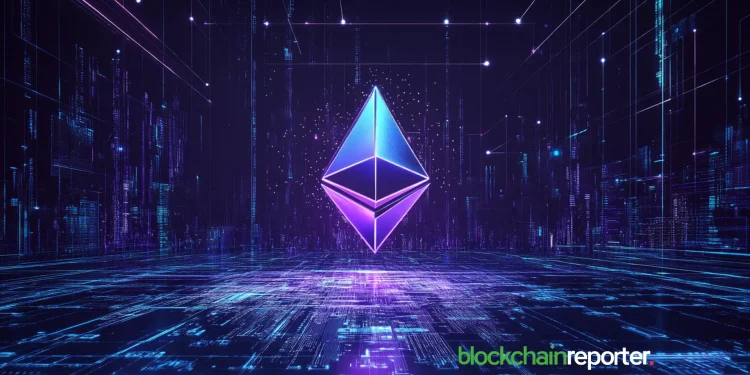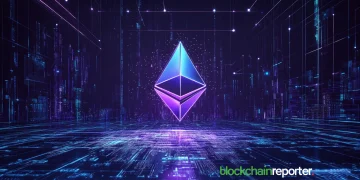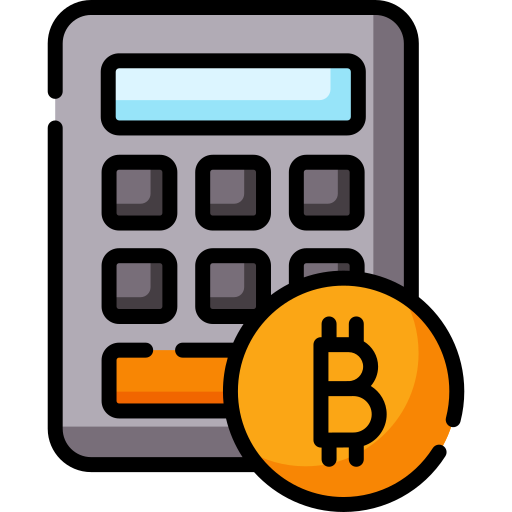Ethereum (ETH) has long been one of the world’s leading cryptocurrencies—not only because of its groundbreaking smart contracts but also due to the role its mining process played in shaping the crypto landscape. This guide dives deep into the fundamentals of Ethereum mining, offering an engaging, step-by-step walkthrough on how to mine Ethereum using GPUs.
Understanding Ethereum Mining
Ethereum mining is the process of validating transactions and adding new blocks to the Ethereum blockchain, all while earning ETH as a reward. Unlike Bitcoin (BTC), which uses the SHA-256 algorithm, Ethereum initially relied on a memory-hard algorithm called Ethash. This design choice was intended to make mining more decentralized by reducing the efficiency gains from ASICs, thus favoring GPU mining.
Mining was central to Ethereum’s growth because it rewarded participants with ETH, incentivizing network security and decentralization. Although the mainnet has now switched to Proof-of-Stake, understanding Ethereum mining remains crucial for grasping the evolution of decentralized networks and for those interested in mining alternative PoW chains or historical practices.
Key Concepts:
- Proof-of-Work (PoW): A consensus mechanism where miners solve complex puzzles to validate transactions.
- Ethash Algorithm: Ethereum’s PoW algorithm designed to be memory-intensive.
- Mining Reward: Miners receive ETH for successfully mining a block; this reward, along with transaction fees, provided the economic incentive for miners.
How Does Ethereum Mining Work?
Ethereum mining involves the following steps:
- Transaction Collection: Transactions are broadcast across the network and collected into a “block” by miners.
- Hashing: Miners use their GPUs to perform millions of hash computations. The goal is to find a hash that meets a specific target determined by the network’s difficulty.
- Block Verification: Once a miner finds a valid hash, they broadcast the new block to the network. Other nodes verify the block, ensuring all transactions are legitimate.
- Reward Distribution: Upon successful verification, the miner receives a block reward in ETH, along with transaction fees from the block.
The Ethash Algorithm
Ethash is designed to be resistant to ASIC mining by emphasizing memory-hard operations. This ensures that a well-equipped GPU rig remains competitive. Ethash requires miners to access a large dataset (called the DAG) that is periodically updated, making efficient memory access a crucial factor in mining performance.
The Role of Hash Rate and Difficulty
- Hash Rate: The speed at which your mining hardware can compute hashes. A higher hash rate increases your chances of finding a valid block.
- Mining Difficulty: A dynamic parameter that adjusts every epoch (a set number of blocks) to maintain an average block time of about 15 seconds (in Ethereum’s PoW era). As more miners join the network, difficulty increases, making it harder to earn rewards.
Essential Hardware for Ethereum Mining
While you learn how to mine Ethereum here is the essential hardware required for this process:
Graphics Processing Units (GPUs)
GPUs are the backbone of Ethereum mining due to their ability to perform parallel computations efficiently. When choosing a GPU for mining, consider the following factors:
- Hash Rate Performance: Measured in MH/s (megahashes per second), this determines the speed at which your GPU can solve the Ethash algorithm.
- Energy Efficiency: Look for GPUs that offer a high hash rate while consuming minimal power.
- Memory: Sufficient VRAM is essential to handle the large DAG file that grows over time.
Popular GPUs for Mining:
- NVIDIA GeForce RTX Series: Known for high performance and efficiency.
- AMD Radeon RX Series: Often provide excellent performance for mining due to strong memory bandwidth.
Additional Hardware Components
To build a robust mining rig, you will also need:
- Motherboard: Should support multiple GPUs. Look for mining-specific boards with enough PCIe slots.
- CPU: While not as critical for mining, a reliable processor is necessary to manage the rig.
- RAM: 4GB to 8GB is typically sufficient.
- Power Supply Unit (PSU): Ensure that the PSU can handle the cumulative power draw of all your GPUs.
- Risers and Frame: PCIe risers allow you to space out GPUs for better cooling, and a sturdy frame or mining rig structure is essential for stability.
Cooling Solutions
Mining hardware generates significant heat. Effective cooling—whether through enhanced airflow, additional fans, or even liquid cooling systems—is vital for maintaining performance and prolonging hardware life.
Software and Tools for Mining Ethereum
The following are the software and tools for mining ETH:
Mining Software
There are several mining software options available that are compatible with Ethereum’s Ethash algorithm. Some of the most popular ones include:
- Ethminer: An open-source mining software widely used in the community. It’s compatible with both NVIDIA and AMD GPUs.
- PhoenixMiner: Known for its user-friendly interface and stable performance, PhoenixMiner supports both AMD and NVIDIA GPUs.
- Claymore Dual Miner: Although it has fallen out of favor recently, it was once a popular choice for mining Ethereum and even allowed dual mining of ETH and another coin simultaneously.
Ethereum Wallet
Before you start mining, you need a secure Ethereum wallet to receive your earnings. Consider using:
- Hardware Wallets: Such as Ledger or Trezor, for maximum security.
- Software Wallets: Such as MetaMask or Atomic Wallet, which offer user-friendly interfaces.
- Custodial Wallets: Provided by exchanges; however, these are less secure compared to non-custodial options.
Mining Pools
Given the competitive nature of mining, joining a mining pool can help smooth out the payout process by combining your hash power with other miners. Popular Ethereum mining pools include:
- Ethermine: One of the largest pools, offering frequent payouts.
- SparkPool: Known for its user-friendly dashboard and reliable service.
- F2Pool: A global pool that supports various cryptocurrencies, including Ethereum.
Mining pools work by distributing the block rewards among all participants based on their contributed hash rate, thus providing more consistent and predictable returns compared to solo mining.
Step-by-Step Guide: Setting Up Your Ethereum Mining Rig
Here is how you can set up your Ethereum mining rig:
1. Gather Your Hardware
Begin by collecting all the necessary components:
- GPUs: Choose high-performance GPUs like NVIDIA RTX or AMD RX series.
- Motherboard: Ensure it has multiple PCIe slots.
- CPU, RAM, and Storage: A basic setup will suffice; most mining rigs don’t require high-end components.
- PSU: A high-wattage, efficient power supply.
- Risers and Frame: For proper spacing and mounting of GPUs.
- Cooling Solutions: Additional fans or a custom cooling setup.
2. Assemble the Mining Rig
- Install the CPU, RAM, and Storage: Mount these onto the motherboard.
- Attach the GPUs: Use PCIe risers to connect each GPU to the motherboard. Arrange the GPUs so that there is ample airflow between them.
- Connect the Power Supply: Ensure that each component, especially the GPUs, receives stable power.
- Set Up the Frame: Secure the assembled components within a mining rig frame or case that promotes good airflow.
3. Install the Operating System
Many miners prefer Windows for its user-friendly interface, though Linux can also be used for its stability and customizability. Install the OS on a small SSD or USB drive.
4. Install Drivers and Mining Software
- GPU Drivers: Download and install the latest drivers for your GPUs from the manufacturer’s website.
- Mining Software: Install your chosen mining software (e.g., Ethminer, PhoenixMiner). Configure it with your wallet address and the details of your chosen mining pool.
- Additional Tools: Consider installing monitoring software to track GPU temperatures, hash rates, and overall system performance.
5. Configure the Mining Software
Each mining software package has its own configuration file or command-line parameters. Typically, you’ll need to:
- Enter your Ethereum wallet address.
- Specify the mining pool’s URL and port.
- Set the number of GPUs and their respective settings.
- Adjust parameters such as intensity and thread concurrency to optimize performance.
6. Start Mining and Monitor Performance
Launch your mining software and verify that your GPUs begin hashing. Monitor performance using the software’s dashboard and third-party monitoring tools. Keep an eye on:
- Hash Rate: Ensure that you are achieving competitive speeds.
- Temperature: GPUs should run within safe limits to prevent overheating.
- Payouts: Check your mining pool dashboard to track your earnings.
Mining Pools vs. Solo Mining
To completely understand how to mine Ethereum, it is also essential to see the difference between mining pools and solo mining:
Solo Mining
Solo mining involves mining independently without joining a pool. While this approach means you receive the entire block reward when you solve a block, the probability of doing so is extremely low given the high competition and increasing network difficulty. Solo mining might be more appealing to those with substantial hash power and lower operational costs, but for most miners, it is a high-risk, low-frequency payout method.
Mining Pools
Joining a mining pool offers several advantages:
- Consistent Payouts: By combining your hash rate with others, you earn a portion of each block reward, leading to regular, smaller payouts.
- Reduced Variance: The inherent randomness of mining is mitigated when rewards are distributed among many participants.
- Ease of Use: Most mining pools provide detailed dashboards and support, making it easier for beginners to get started.
However, mining pools also charge a small fee (typically 1-2%) on your earnings, which should be factored into your overall profitability calculations.
Evaluating Profitability and ROI
Calculate your initial investment (hardware, setup costs, and electricity) versus your estimated monthly earnings. A thorough ROI analysis will help you understand:
- Breakeven Point: How long it will take to recoup your initial investment.
- Profit Margins: Once breakeven is reached, the remaining earnings become profit.
- Scalability: Whether investing in additional hardware will lead to proportionate increases in revenue.
Moreover, there are several online profitability calculators available that allow you to input your hardware specifications, electricity costs, and other variables to estimate your potential earnings. These tools can help you determine whether your mining operation will be profitable in the long term.
Environmental and Energy Considerations
The following are the environmental and energy considerations for ETH mining:
Energy Consumption
Ethereum mining, like all PoW mining, requires significant energy. Efficient hardware and optimized rig configurations can help reduce power consumption. For many miners, minimizing energy costs is as critical as maximizing hash rate.
Cooling and Ventilation
Proper cooling not only prolongs hardware life but also enhances performance. Overheating can lead to throttling or permanent damage, so invest in quality cooling systems, such as additional fans or even liquid cooling setups for high-density rigs.
Sustainable Mining Practices
With growing awareness of the environmental impact of crypto mining, many miners are turning to renewable energy sources—such as solar or wind power—to reduce their carbon footprint. In regions where renewable energy is available and affordable, sustainable mining practices can also improve overall profitability.
Conclusion: The Future of Ethereum Mining
Ethereum’s transition to Proof-of-Stake fundamentally changed the mining landscape. While traditional mining of ETH on the mainnet is now a thing of the past, the underlying technology and principles remain relevant. Miners who once relied on GPU rigs have had to pivot—either by switching to mining other PoW cryptocurrencies or by exploring staking opportunities.
For those still interested in PoW mining, alternative coins and Ethereum forks (such as Ethereum Classic) continue to use the Proof-of-Work consensus mechanism. These cryptocurrencies can often be mined using similar techniques and hardware as traditional Ethereum mining. Researching these alternatives can open new opportunities for miners looking to diversify their portfolios.























